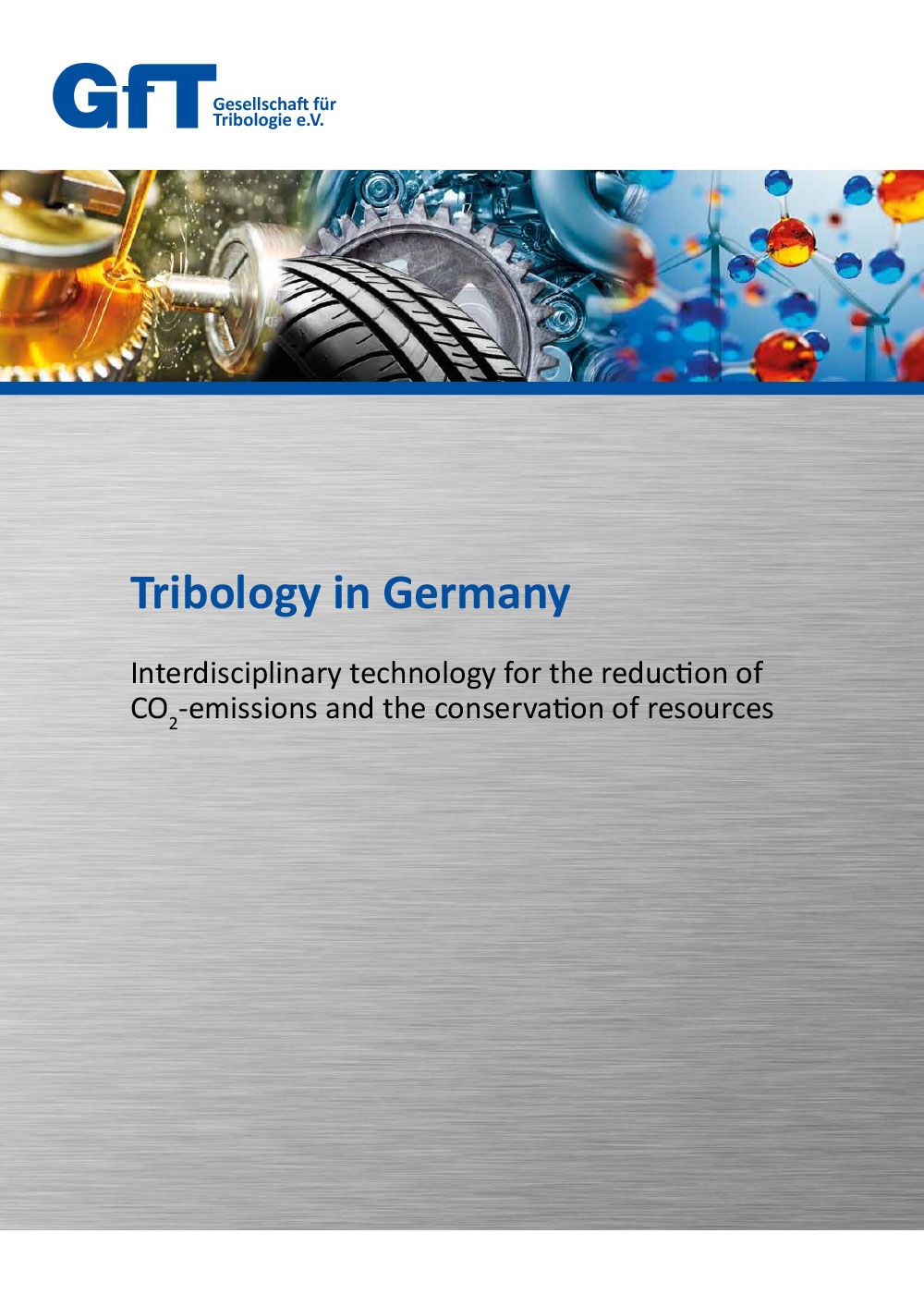 At his 60th anniversary conference, the GfT presented an expert study “CO2 & Friction” with the subtitle “Cross-sectional technology to reduce CO2 emissions and conserve resources”. CO2-Emissions & Friction are inseparably linked together and offer, if friction is consequently reduced in all branches of a national economic, significant contributions for reductions in CO2 emissions.
At his 60th anniversary conference, the GfT presented an expert study “CO2 & Friction” with the subtitle “Cross-sectional technology to reduce CO2 emissions and conserve resources”. CO2-Emissions & Friction are inseparably linked together and offer, if friction is consequently reduced in all branches of a national economic, significant contributions for reductions in CO2 emissions.
About this study
Following a survey determining tribology activities at German universities the German Society for Tribology conducted in 2014, this study focuses on a more comprehensive approach. Leading experts from automotive and lubrication industry as well research institutes give account of the status quo of tribology activities in Germany from their perspective and provide insight in the future of tribology. Due to the great importance of the motor vehicle industry and the technological breakthroughs currently unfolding, emphasis of this current study was put on this industry and the correlation of friction and CO2 emissions and environmental issues, such as fine dust and e-mobility.
Brief summary
Less CO2 emissions through friction reduction. Friction represents a hidden property in order to reduce CO2 emissions.
Leading experts from automotive and lubrication industry as well research institutes give account of the status quo of tribology activities in Germany from their perspective and provide insight in the future of tribology. Due to the great importance of the motor vehicle industry and the technological breakthroughs currently unfolding, emphasis of this current study was put on this industry and the correlation of friction and CO2 emissions and environmental issues, such as fine dust and e-mobility….
The proportion of friction losses of the primary energy consumption is ~23%. The realistic long-term and total reduction potential of primary energy consumption generated by friction losses amounts to 8.6%. If the reduction of friction is applied consequently on the national level in Germany, the potential long-term CO2 emission savings created by friction reduction amounts to approximately 208 Mt annually or at least 36% of the CO2 savings committed by the German government until 2030.
Wear particles are responsible in part for particulate emissions. Non-exhaust emissions in transportation come from abrasive wear of tires, brakes and road surfaces as well as current collectors, which will persist also for e-mobility. Wear resistant materials and coatings contribute here to reduce such particulate emissions by -90%.
….Beyond friction reduction, tribology is embedded in systems of recuperating energy from exhaust heat which offer additional fuel saving potentials between 5% and 10%.
Further contents
- Significance of Tribology in relation to Energy Sources
- Transportation and E-mobility
- Strategies to reduce Friction
- Air pollution control
- CO2-neutral energy
- Environmentally Acceptable Lubricants
- Legislative Eco-Political measures impacting Tribology
- Education & Research
- Tribometry
Full version of study: Download
Brief Summary: DownloadPlease find here the german version.
Étude 2019 de la GfT “CO2 et Frottement”: La version française est disponible chez Techniques de l´Ingénieur.

